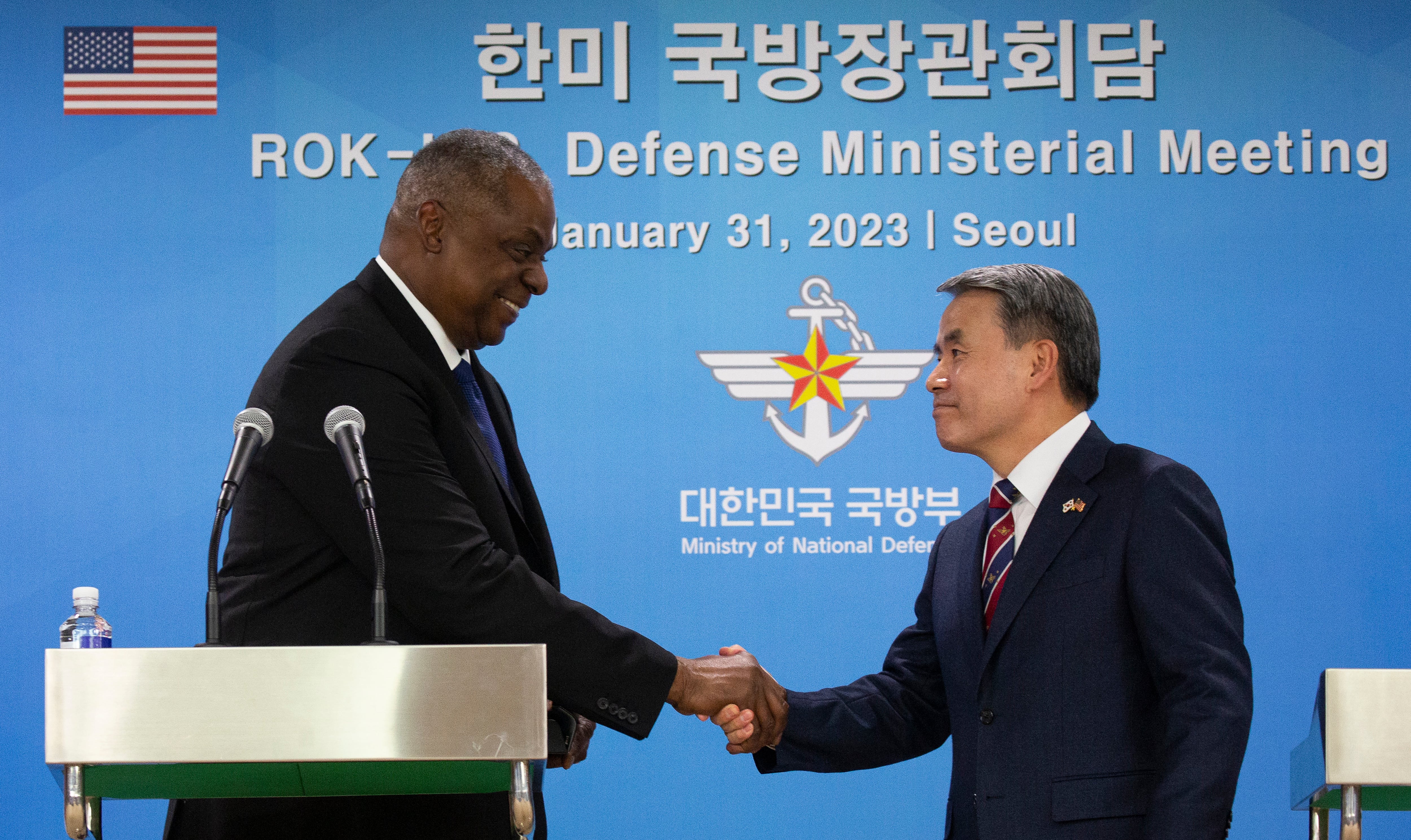SEOUL, South Korea — North Korea on Thursday threatened the “toughest reaction” to the United States’ expanding joint military exercises with South Korea to counter the North’s growing nuclear weapons ambitions, claiming that the allies were pushing tensions to an “extreme red line.”
The statement by Pyongyang’s Foreign Ministry came in response to comments by U.S. Defense Secretary Lloyd Austin, who said in Seoul on Tuesday that the United States would increase its deployment of advanced military assets to the Korean Peninsula, including fighter jets and aircraft carriers, as it strengthens joint training and operational planning with South Korea.
South Korea’s Defense Ministry said the United States flew B-1B bombers and F-22 and F-35 fighter jets in an exercise with South Korean fighters on Wednesday above South Korea’s western waters, which it said was aimed at demonstrating the United States’ commitment to defend its ally with the full range of its military capabilities. The United States and South Korea are also planning to hold a simulation exercise this month aimed at sharpening their response if North Korea uses nuclear weapons.
In a statement attributed to an unidentified spokesperson of its Foreign Ministry, North Korea said the expansion of the allies’ drills is threatening to turn the Korean Peninsula into a “huge war arsenal and a more critical war zone.” The statement said the North is prepared to counter any short-term or long-term military challenge by the allies with the “most overwhelming nuclear force.”
“The military and political situation on the Korean Peninsula and in the region has reached an extreme red line due to the reckless military confrontational maneuvers and hostile acts of the U.S. and its vassal forces,” the spokesperson said.
RELATED

North Korea for decades has described the United States’ combined military exercises with South Korea as rehearsals for a potential invasion, although the allies have described those drills as defensive.
North Korea last year ramped up its own weapons demonstrations as the allies resumed their large-scale training that had been downsized for years. North Korea’s actions included a slew of missile and artillery launches that it described as simulated nuclear attacks on South Korean and U.S. targets.
“DPRK will take the toughest reaction to any military attempt of the U.S. on the principle of ‘nuke for nuke and an all-out confrontation for an all-out confrontation!’” the North Korean spokesperson said, invoking the country’s formal name, the Democratic People’s Republic of Korea.
“If the U.S. continues to introduce strategic assets into the Korean Peninsula and its surrounding area, the DPRK will make clearer its deterring activities without fail according to their nature,” the spokesperson said.
Jeon Ha-kyu, spokesperson of South Korea’s Defense Ministry, said the ministry had no immediate comment in response to the North Korean statement. He said the allies’ latest aerial drills were aimed at demonstrating the credibility of the U.S. “extended deterrence,” referring to a commitment to use the full range of its military capabilities, including nuclear ones, to defend South Korea. He declined to reveal the exact number of U.S. and South Korean aircraft involved in the exercise.
Austin’s visit came as South Korea seeks stronger assurances that the United States will swiftly and decisively use its nuclear capabilities to protect its ally in face of a North Korean nuclear attack.
South Korea’s security jitters have risen since North Korea test-fired dozens of missiles in 2022, including potentially nuclear-capable ones designed to strike targets in South Korea and the U.S. mainland. North Korea’s elevated testing activity has been punctuated by threats to preemptively use its nuclear weapons in a broad range of scenarios in which it perceives its leadership to be under threat, including conventional clashes or non-war situations.
In a news conference following their meeting, Austin said he and South Korean Defense Minister Lee Jong-Sup agreed to further expand their combined military exercises, including a resumption of live-fire demonstrations. They pledged to continue a “timely and coordinated” deployment of U.S. strategic assets to the region.
They said that their countries’ resumption of large-scale military drills last year effectively demonstrated their combined capabilities to deter North Korean aggression. The allies had downsized their training in recent years to create room for diplomacy with North Korea during the Trump administration and because of the COVID-19 pandemic.
South Korea and the United States have also been strengthening their security cooperation with Japan, which has included trilateral missile defense and anti-submarine warfare exercises in past months amid the provocative run in North Korean weapons tests.
“We deployed fifth-generation aircraft, F-22s and F-35s, we deployed a carrier strike group to visit the peninsula. You can look for more of that kind of activity going forward,” Austin said.
Tensions could further rise in coming months with North Korean leader Kim Jong Un doubling down on his nuclear ambitions.
During a political conference in December, Kim called for an “exponential increase” in nuclear warheads, mass production of battlefield tactical nuclear weapons targeting South Korea, and the development of more powerful long-range missiles designed to reach the U.S. mainland.
Experts say Kim’s nuclear push is aimed at forcing the United States to accept the idea of North Korea as a nuclear power and then negotiating badly needed economic concessions from a position of strength.
Nuclear negotiations between the U.S. and North Korea have been derailed since 2019 because of disagreements over a relaxation of U.S.-led economic sanctions against the North in exchange for steps by North Korea to wind down its nuclear weapons and missiles programs.
The North Korean spokesperson said Pyongyang isn’t interested in any contact or dialogue with the United States as long as it maintains its “hostile policy and confrontational line,” accusing Washington of maintaining sanctions and military pressure to force the North to “disarm itself unilaterally.”





